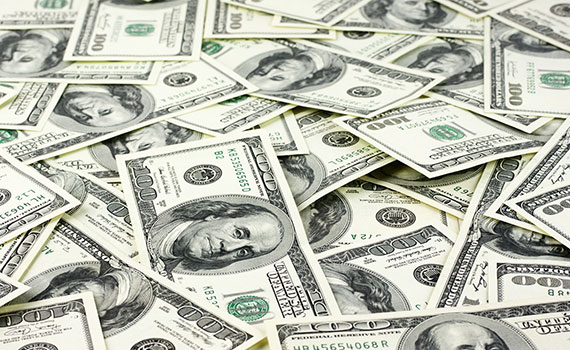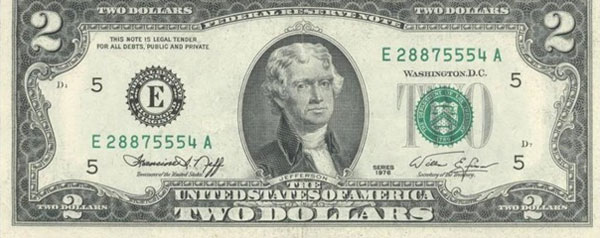Secrets of producing US dollars
There are strict standards and regulations in the production of the world's most popular coins, from ink color selection and printing to security, but not everyone knows.
>>> Looking back at the history of 100 USD
>>> New USD 100 sheet officially circulated in the world
1. Ink and paper

The paper and ink used to produce US dollars are in the form of 'rare goods' . The US Department of the Treasury (BEP) is primarily responsible for printing these dollars, which will monitor and check each piece of paper used in the printing process. Crane Paper is the main unit that provides paper for money printing. The United States currency has 75% cotton and 25% linen. It is the uniqueness of this material compared to other popular papers that makes each US dollar sheet have its own shape and feel. Green and black are the two primary colors used in dollar ink. These two colors are blended and tested according to BEP's own standards. The quality of inks also undergoes rigorous testing before being used.
2. Design

BEP employees are tasked with selecting the mainstream design, perspective as well as handling the art of each dollar. In fact, many ideas about the design of this currency were considered and selected before being approved by the US Treasury secretary. Each banknote will have its own image rules and therefore, designers will not have to spend time picking ideas for each type of money. For example, the $ 10 bill will use Alexander Hamilton's face on the front, and the back will be the US Treasury Department building. From there, designers will develop their ideas and consult with the engraving party to produce the final prototype of the product.
3. Carved

The carvers will use the design of each face value to create three-dimensional engravings. This process is done manually, using sharp tools and acid to make up the product. The work of carving American banknotes is highly specialized, as the sculptors are designated to separate each step rather than using only one person for the whole process.
4. Offset printing

Offset printing (images of ink that are pressed onto rubber sheets and pressed from the rubber onto paper) are the first step in this complex printing process. 10,000 bills will be printed every hour and will be strictly inspected to ensure the stability of the ink color. They will then be exposed for 72 hours before being transferred to the next stage.
5. Print engraving steel

The ink is put into prefabricated molds, then it will squeeze tightly on printed paper with great compression, ensuring the high accuracy of the final product. This printing technique is applied to images, textures, scroll lines as well as characters of different denominations.
6. Check

BEP staff will check each printed sheet to detect errors in printed sheets. After removing the error notes, the final stage will be done, numbering each coin and re-printing it again with black ink.
7. Production

Every year, millions of new bills of each par value are printed to serve consumer demand worldwide. Typically in 2009, 26 million new bills were printed every day. According to statistics, 95% of the annual printed money is used to replace old bills.
8. Anti-counterfeiting

Global dollar counterfeiters are always trying to make the most compelling copies. To solve this problem, BEP always tries to update the most advanced security methods, as well as trying to recover old counterfeit currencies. In the 90s, the USD used security methods including drawings, color-changing ink as well as the most sophisticated printing techniques. By the 2000s, the introduction of new money sheets with color updates as well as characters made it more difficult to fake this currency.
The title has been changed.
- Real distinction - $ 100 new paper money
- A billion dollars to learn the secrets of the earth
- Only presidents can print their images on US dollar bills? No, that's wrong!
- Discover pearl secrets
- Video: According to you, how big is the trillion dollar figure?
- Producing wind power and solar power is cheaper than coal
- Australian dollar notes contain deadly toxins
- Invest in cancer treatment to control all infectious diseases
- Strange eggs in the belly of a pig are worth a million dollars
- Interesting secrets about oxygen
- Can produce fuel from CO2 atmosphere
- 7 reasons for students 'grade C' in the world
 'Fine laughs' - Scary and painful torture in ancient times
'Fine laughs' - Scary and painful torture in ancient times The sequence of numbers 142857 of the Egyptian pyramids is known as the strangest number in the world - Why?
The sequence of numbers 142857 of the Egyptian pyramids is known as the strangest number in the world - Why? History of the iron
History of the iron What is alum?
What is alum?